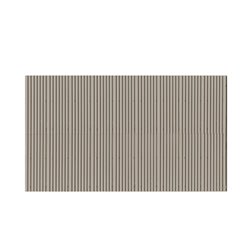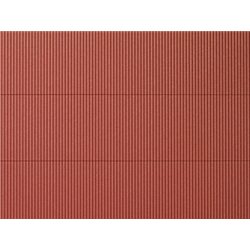Static grass puffer bottles work by manually charging model grass fibres with static electricity. When the charged...
No products
Product successfully added to your shopping cart
There are 0 items in your cart. There is 1 item in your cart.
Search Tips
How can I create realistic corrugated roofs for buildings?
A number of model manufacturers produce materials to help modellers scratch-build scene elements to add further details to a model or diorama, such as corrugated panel sheets. For those looking to create corrugated roof panels, these sheets are very helpful and can be cut to appropriate dimensions to simulate corrugated roofing or wall panels. These cut-down panels can then be placed on the model or layout and can be made to overlap each other, faithfully recreating realistic corrugated roofing effects.
For those modellers looking to regularly repeat the process to produce multiple sheets or panels then there are a few economy options available that avoid the need for purchasing multiple panel sheets. Use a panel sheet cut to the appropriate dimensions, this can then be put to one side to serve as a template. Take sheets of thin tin foil, these can then be gently pressed onto the template effectively contouring and shaping to the corrugated pattern. A single tin sheet may be a little too flimsy for our purposes but multiple sheets can be added providing suitable bulk and rigidity. A thin layer of watered-down PVA glue can be applied between each sheet to help adhesion and thus give suitable bulk.
Similarly, we can use two-stage epoxy to effectively mimic corrugated sheets. Take equal amounts of two-stage epoxy and roll them together until a consistent colour tone has been achieved, this indicates that the two constituents are suitably mixed. Roll this mixture flat and then apply it to the template. The epoxy mix can be contoured into place gently with a finger or by pressing another section of the corrugated sheet on top, effectively sandwiching the epoxy mix.
Although we have mentioned using epoxy and tin foil to form corrugated roof strips, the technique is suitably versatile in that it may be similarly used to mimic other surfaces or textures. Why not try this technique to help scratch-build parts and elements for your next project?
Click here to receive the tips weekly in your mailbox. You can unsubscribe at any time.










